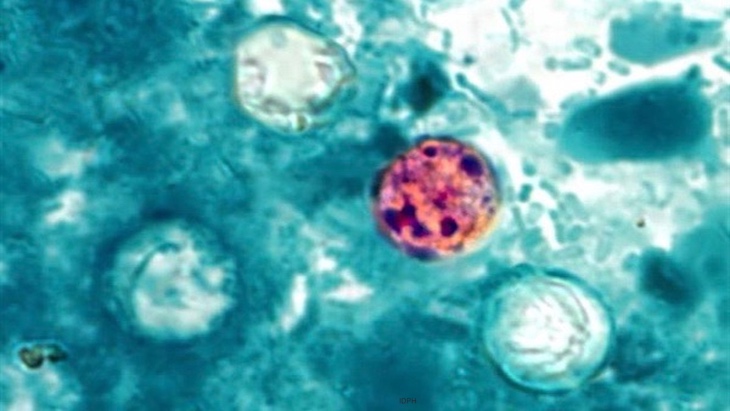A cyclospora outbreak grows to 77 ill. This outbreak, identified by the FDA last week, has grown from 60 cases, according to that agency’s CORE Outbreak Investigation Table. In that investigation, traceback has been initiated, samples have been collected, and analysis is initiated. No recall has been issued, and no outbreak investigation notice has been published.

There is another mystery cyclospora outbreak on that table, with six people sick. In that outbreak, traceback has been initiated.
Every summer since 2013, there has been at least one cyclospora outbreak in the United States. These illnesses have been linked to raspberries, mesclun lettuce, basil, cilantro, vegetable trays, and snow peas. Some of these items were imported, but some were grown and processed in the United States.
Many of these outbreaks have not been solved. One of the problems in identifying these outbreaks is that tests for genetic material, such as whole genome sequencing, is not possible for the parasite.
Cyclospora cayetanensis is a single celled parasite that causes gastrointestinal illness in people that is called cyclosporiasis. People contract this infection by eating food or drinking water contaminated with the oocyst. This contamination can occur in the field, from human waste or through irrigation with contaminated water, or it can occur in the processing and handling stage.
The oocysts are excreted in the feces. At this stage the immature oocyst is not infectious. It must sporulate (mature) on plants or in water before it is infectious. The oocysts exsporulate in the body and invade the epithelium in the intestines. This causes the severe diarrhea that is characteristic of the illness.
As this cyclospora outbreak grows, as it is likely to, hopefully investigators will zero on on the suspect food. We’ll keep you updated.

If you have been sickened with a cyclospora infection, please contact our experienced attorneys for help with a possible lawsuit at 1-888-377-8900 or 612-338-0202.




